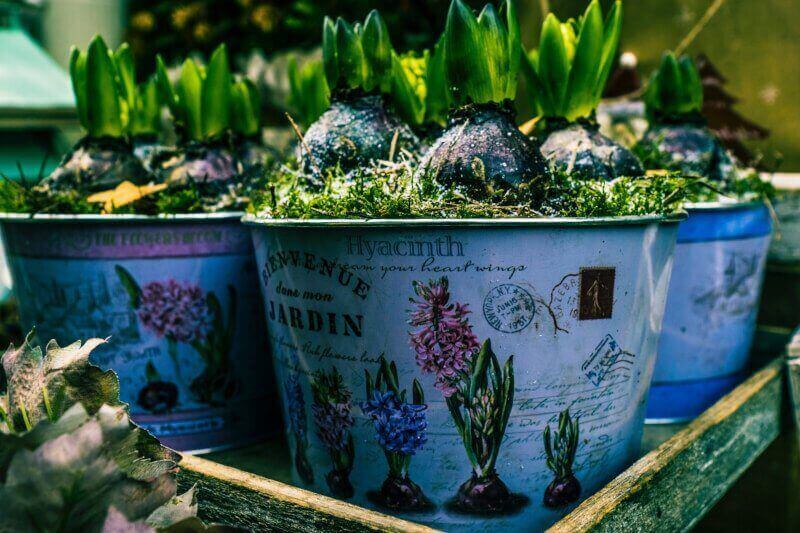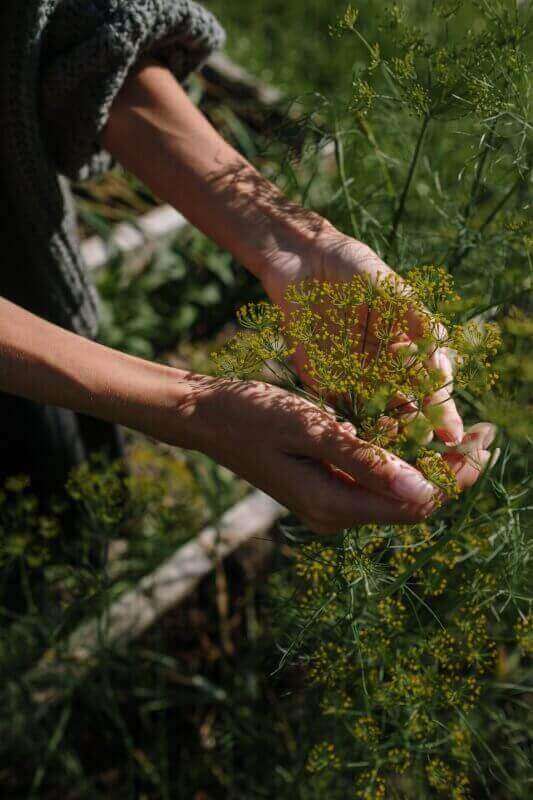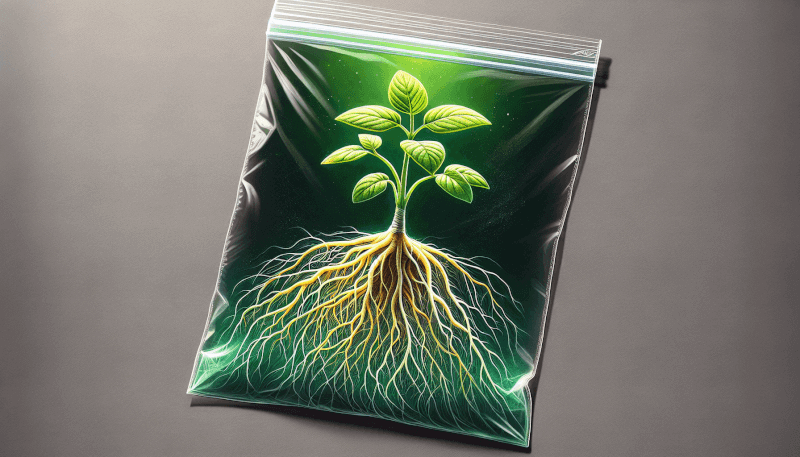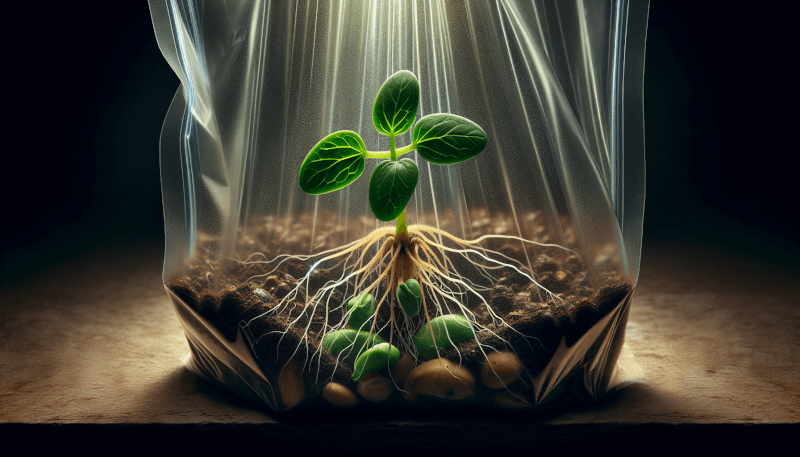👋 Click the mic button to talk to Alfred, the Todd's Seeds Gardening/Sprouting Expert – Feel free to ask him anything!
Ask Virtual Todd Anything - Click the Mic
Imagine being able to easily grow your own sprouts at home, without the need for a garden or any fancy equipment. In this article, you will discover a simple and convenient method of sprouting seeds using just a Ziplock bag. By following these easy steps, you can experience the joy of watching tiny seeds transform into nutritious and flavorful sprouts right before your eyes. Get ready to embark on a journey of green thumbs and fresh flavors as you learn how to sprout seeds in a Ziplock bag.

Materials Needed
To start sprouting seeds in a ziplock bag, you will need a few key materials: ziplock bags, seeds, water, and paper towels. These simple supplies are all you need to successfully sprout your seeds and begin your gardening journey.
Ziplock Bags
First and foremost, you will need ziplock bags to create the perfect environment for your seeds to sprout. Make sure to choose a size that will comfortably fit your seeds and allow for proper airflow and moisture retention.
Seeds
The most important component of sprouting seeds is, of course, the seeds themselves. When choosing seeds, it’s crucial to consider the type of plant you want to grow. Whether you’re interested in herbs, vegetables, or flowers, make sure to select seeds that align with your gardening goals.
Water
Water is a vital aspect of the sprouting process, as it provides the necessary moisture for the seeds to germinate. It’s essential to use clean, filtered water to prevent any potential contaminants from affecting the sprouting seeds.
Paper Towels
Paper towels are used as the medium for sprouting the seeds. They provide a cushioned and absorbent surface for the seeds to rest on during the sprouting process. Make sure to choose high-quality, non-toxic paper towels to maintain the health and purity of your sprouts.
Choosing the Right Seeds
Before embarking on your sprouting adventure, it’s crucial to carefully consider the type of seeds you want to sprout. Here are a few key factors to consider when making your seed selection:
Consideration of Seed Type
When choosing seeds for sprouting, it’s important to think about the type of plant you want to grow. Are you interested in sprouting herbs like basil or mint? Or perhaps you want to delve into the world of sprouting vegetables like broccoli or radishes. Take the time to research different seed types and choose ones that align with your gardening preferences.
Seed Packets vs. Bulk Seeds
When it comes to purchasing seeds, you have the option of either buying seed packets or bulk seeds. Seed packets are generally a more convenient choice for beginners, as they come with detailed instructions on planting and caring for the seeds. On the other hand, bulk seeds are often more cost-effective and allow for a larger variety of choices.
Organic vs. Non-Organic
Another consideration when selecting seeds is whether to opt for organic or non-organic varieties. Organic seeds are grown without the use of synthetic fertilizers or pesticides, making them a healthier and more environmentally friendly choice. However, non-organic seeds can be a more affordable option for those on a budget.

Preparing the Ziplock Bag
Once you’ve selected your seeds, it’s time to prepare the ziplock bag for the sprouting process. Follow these simple steps to ensure the optimal environment for your seeds to sprout:
Cleaning the Bag
Before using the ziplock bag, it’s important to clean it thoroughly. Rinse the bag with warm, soapy water, making sure to remove any residue or contaminants. Rinse it well to eliminate any soap residue, as this can harm the sprouting seeds.
Moistening the Paper Towel
Take a paper towel and moisten it with clean, filtered water. The paper towel should be damp but not dripping wet. Excess moisture can lead to mold growth, so be careful not to oversaturate. Place the moistened paper towel inside the ziplock bag, making sure it covers the entire bottom surface.
Seeding Method
When it comes to placing the seeds on the paper towel, you have a few options. You can scatter the seeds across the paper towel or create rows for a more organized approach. Make sure to leave sufficient space between the seeds to allow for proper growth and airflow.
The Sprouting Process
Once you’ve prepared the ziplock bag with the seeds, it’s time to focus on the sprouting process. The success of sprouting seeds in a ziplock bag depends on three key factors: moisture and humidity, temperature, and light exposure.
Moisture and Humidity
Seeds require moisture to germinate and sprout. To ensure the proper humidity level inside the ziplock bag, seal it tightly, trapping the moisture from the moistened paper towel. However, it’s essential to strike a balance and avoid excessive moisture, as it can lead to mold growth.
Temperature
Maintaining the optimal temperature is crucial for the sprouting process. Most seeds prefer a warm environment, typically between 65°F and 75°F (18°C and 24°C). Placing the ziplock bag in a consistently warm location, such as a sunny windowsill or a greenhouse, will promote successful sprouting.
Light Exposure
Light plays a critical role in the sprouting process, as it triggers several important biological processes. Find a bright location for your ziplock bag, ensuring your seeds receive adequate sunlight. If natural light is limited, consider using a grow light to provide the necessary illumination for optimal growth.

Monitoring and Maintaining
Once the sprouting process has begun, regular monitoring and maintenance are necessary to ensure healthy seedlings. Here are a few important tasks to keep in mind:
Checking for Moisture
Always keep an eye on the moisture level inside the ziplock bag. If the paper towel starts to dry out, carefully add a small amount of water to moisten it, ensuring the seeds receive the necessary hydration. Avoid overwatering, as it can lead to waterlogging and hinder the growth of the sprouts.
Air Circulation
Proper air circulation is crucial for healthy seedlings. Gently open the ziplock bag for a few minutes each day, allowing fresh air to circulate. This will help prevent the buildup of excess moisture and reduce the risk of mold or rot.
Inspecting for Mold or Rot
Regularly inspect your sprouting seeds for any signs of mold or rot. If you notice any mold growth or a foul smell, remove the affected seeds immediately. Mold or rot can quickly spread and impact the entire batch, so swift action is necessary to protect the health of the remaining sprouts.
Troubleshooting
Sometimes, despite your best efforts, issues may arise during the sprouting process. Here are a few common problems and possible solutions:
Seeds Not Sprouting
If your seeds fail to sprout within the expected timeframe, it could be due to various reasons. Check the moisture level in the ziplock bag to ensure it’s optimal for germination. Additionally, review the temperature and light exposure to ensure they are within the appropriate range for the specific seeds you’re sprouting.
Mold Growth
Mold growth is a common issue that can occur when sprouting seeds. To prevent mold, make sure to avoid overwatering and maintain proper air circulation. If you notice mold developing, remove the affected seeds promptly and adjust the conditions to prevent further growth.
Seedling Wilting
If your seedlings start to wilt, they may be lacking water or receiving too much sunlight. Check the moisture level in the ziplock bag and adjust it accordingly. Additionally, monitor the light exposure and ensure your seedlings are not getting sunburned.

Transferring Sprouted Seeds
Once your seeds have successfully sprouted and grown into seedlings, it’s important to transfer them to a suitable container for continued growth. Here’s what you need to consider when transferring your sprouted seeds:
Choosing the Right Container
Selecting the appropriate container for your sprouted seedlings is crucial for their overall health and development. Opt for containers with drainage holes to prevent waterlogging and ensure proper air circulation. Additionally, consider the size of the container, allowing enough space for the root system to grow.
Planting Medium
Choosing the right planting medium is essential when transferring sprouted seeds. Use a well-draining potting mix enriched with organic matter to provide the necessary nutrients for healthy growth. Avoid heavy soils that can suffocate the roots and hinder proper development.
Transplanting the Seedling
Carefully lift the seedlings from the ziplock bag, making sure to handle them with care to avoid damaging the delicate roots. Gently separate the seedlings and place them in the prepared containers, ensuring the soil is firmly packed around the roots to provide stability.
Common Mistakes to Avoid
To ensure successful sprouting and growth of your seeds in a ziplock bag, it’s essential to steer clear of common mistakes that can hinder their progress. Here are a few mistakes to avoid:
Over-watering
One of the most common mistakes when sprouting seeds is over-watering. Too much moisture can lead to waterlogged roots and promote the growth of mold or rot. Always monitor the moisture levels and adjust accordingly, keeping the paper towel damp but not dripping wet.
Under-watering
On the other hand, under-watering can also be detrimental to seed sprouting. It’s crucial to maintain the necessary moisture for germination and sprouting. Regularly check the ziplock bag for any signs of dryness and promptly add water if needed.
Insufficient Light
Light is an essential factor for successful sprouting and healthy growth. Insufficient light can lead to weak and leggy seedlings. Ensure your sprouted seeds receive ample sunlight or invest in a grow light if natural light is limited.

Benefits of Sprouting Seeds in Ziplock Bag
Sprouting seeds in a ziplock bag offers several advantages that make it a popular choice for home gardeners. Here are some key benefits:
Convenience
The ziplock bag method of sprouting seeds is incredibly convenient. It requires minimal space and can be easily set up in any location with access to light and water. Additionally, the compact size of the ziplock bag allows for sprouting seeds on a small scale, perfect for beginners or those with limited space.
Compactness
Sprouting seeds in a ziplock bag is an ideal solution for those with limited garden space. The compact size of the ziplock bag allows for sprouting multiple varieties of seeds without requiring excessive room. This makes it an excellent option for urban gardeners or individuals living in apartments.
Safety
Using a ziplock bag to sprout seeds provides a controlled and protected environment for germination. It helps protect the seeds from pests, diseases, or adverse weather conditions. Furthermore, the transparency of the bag allows for easy monitoring of the sprouting process, ensuring any issues can be addressed promptly.
Ways to Use Sprouted Seeds
Once your seeds have successfully sprouted, you can enjoy the benefits of these nutrient-packed sprouts in various ways. Here are a few ideas for incorporating sprouted seeds into your diet:
Salads and Sandwiches
Sprouted seeds add a delightful crunch and nutritional boost to salads and sandwiches. Toss them into your favorite salad for added texture or layer them onto sandwiches for a fresh and nutritious twist.
Smoothies and Juices
Blend sprouted seeds into your favorite smoothies or juices to enhance their nutritional content. The mild flavor of sprouted seeds pairs well with a variety of fruits and vegetables, making them a versatile addition to your blended beverages.
Baked Goods
Get creative in the kitchen by incorporating sprouted seeds into your baked goods. Sprinkle them on top of bread, muffins, or cookies for added texture and nutrition. Experiment with different recipes to discover delightful combinations.
In conclusion, sprouting seeds in a ziplock bag is a simple and effective way to bring the joy of gardening into your home, even with limited space. By carefully selecting the right seeds, preparing the ziplock bag correctly, and providing the optimal conditions for sprouting, you can enjoy the excitement of watching your seeds grow into healthy seedlings. With proper monitoring, maintenance, and trouble-shooting, you can ensure successful sprouting and transfer your sprouted seeds into containers for continued growth. Remember to avoid common mistakes and enjoy the numerous benefits of sprouting seeds in a ziplock bag, from convenience and compactness to safety and the ability to incorporate these nutrient-packed sprouts into your daily meals. Happy sprouting!